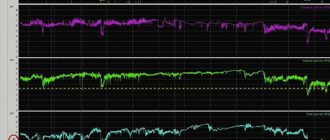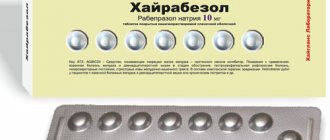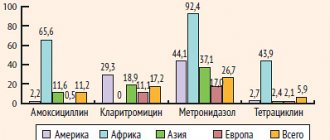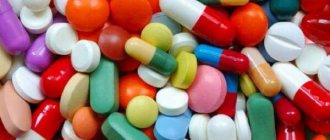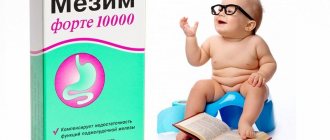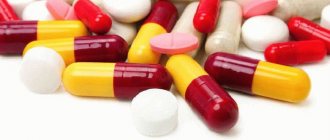Nausea, heaviness and pain in the stomach, heartburn, bloating and other gastrointestinal ailments have become firmly established in the life of modern man. In most cases, these symptoms are provoked by gastritis. According to conservative estimates, more than 40% of the adult population suffers from the disease. A constant lack of time for proper nutrition, snacking on the run, lack of a diet - such a lifestyle only increases the number of sick people. Pharmaceutical companies are constantly forced to develop and release new products to combat pathology.
Unfortunately, sometimes there is not enough time not only for proper nutrition, but also for visiting a gastroenterologist. As a result, people practice self-medication: for symptoms of gastritis, they simply drink any advertised remedy. Then relief comes for the former, while the latter complain that the medications are not effective. Of course, this is the wrong approach to treatment. You should not take medications without a doctor's prescription. When a well-wisher recommends a “proven” remedy, it does not mean that the drug is suitable for everyone. There are different types of gastritis; no universal remedy has been created to combat the disease. Obviously, a correct diagnosis is important for the treatment of gastritis. Only then is it possible to develop an effective treatment strategy.
Diagnosis of gastritis
The article will discuss the treatment of gastritis with high acidity. Inflammation of the mucous membrane occurs due to excessive secretion of gastric juice. It happens to be caused by:
- frequent consumption of spicy, fried, fatty foods;
- drug or chemical effects on the gastric mucosa;
- alcohol and smoking;
- with frequent cases of reflux (reflux of the contents of the duodenum into the stomach);
- infection with the bacterium Helicobacter pylori.
First of all, it is recommended to adjust your diet: give up junk food and switch to food that does not irritate the mucous membranes - small meals, moderate temperature, mainly in liquid and mushy form. Products prohibited during illness include:
- foods that increase acidity (unripe fruits, sour fruits, spices);
- causing flatulence (thick pasta, hard cheeses, scrambled eggs, legumes);
- causing a feeling of heaviness (fatty meats, flour products);
- alcoholic and carbonated drinks, strong brewed tea and coffee.
If you are sick, it is recommended to get more rest, not to overwork, and avoid stressful situations. Alternative medicine offers popular recipes to alleviate gastritis with high acidity:
- tea based on rose hips or sea buckthorn;
- propolis tincture;
- gastric collection from a mixture of medicinal herbs mixed in equal proportions (celandine, chamomile, yarrow, St. John's wort);
- decoction of flaxseeds;
- fresh carrot juice.
Drug therapy is based on the use of proton pump inhibitors (PPIs). PPIs are used to treat most acid-related diseases. The principle of action is to prevent the synthesis of hydrochloric acid, which reduces the level of acidity of gastric juice. If the disease is caused by the bacterium Helicobacter pylori, a course of antibiotics is required.
Use of Nolpaza for the treatment of gastritis
Among the PPIs is the modern drug Nolpaza, often prescribed by gastroenterologists for gastritis with high acidity. Nolpaza for gastritis is used over a 2-week course to achieve a long-term effect, but a clear decrease in the level of acidity of gastric juice and relief of the condition is noted already on the first day of taking the drug. Nolpaza is also prescribed in the complex therapy of gastritis caused by the bacterium Helicobacter pylori.
Reasons for use
Nolpaza is also effective for other acid-dependent diseases, including the following:
- symptomatic gastroesophageal reflux disease;
- reflux esophagitis;
- Zollinger-Ellison syndrome;
- stomach and duodenal ulcers;
- heartburn;
- other conditions in which hydrochloric acid is produced excessively.
The use of Nolpaza promotes healing of the gastric mucosa and neutralizes the irritating effect of hydrochloric acid. If you follow the diet, there is a rapid restoration of stomach functions.
Contraindications for use
From the above it follows that Nolpaza works effectively for gastritis and other diseases caused by excess hydrochloric acid. A number of restrictions on use are described:
- period of pregnancy and lactation (except in exceptional cases);
- renal failure;
- while taking drugs for the treatment of HIV (atazanavir);
- children under 12 years of age;
- individual intolerance;
- oncological formations;
- Use the drug with caution for liver diseases.
Dosage
It is recommended to take the drug before meals, whole and without chewing, with a small amount of water. Nolpaza is used according to the rules: two tablets of 40 mg per day with antibiotics for 7-14 days in the treatment of gastritis associated with the bacterium Helicobacter pylori (the course is repeated as required), a tablet of 20 or 40 mg for at least two weeks for the treatment of gastritis with increased acidity.
For children with gastritis, a different drug is prescribed; it is permissible to prescribe a drug for the treatment of reflux esophagitis and reflux disease. The decision on the appointment and duration of treatment is made by a gastroenterologist after an examination and an accurate diagnosis.
Nolpaza
Enteric coated tablets:
Inside, before meals, with water. The tablet should not be chewed or crushed (broken).
GERD, incl. erosive and ulcerative reflux esophagitis and associated symptoms (heartburn, acid regurgitation, pain when swallowing):
- mild: recommended dose - 1 tablet of 20 mg per day;
- moderate and severe: recommended dose - 1-2 tablets of 40 mg per day (40-80 mg per day).
Relief of symptoms usually occurs within 2-4 weeks. The course of therapy is 4-8 weeks. For prevention, as well as as long-term maintenance therapy, take 20 mg per day, if necessary, the dose is increased to 40-80 mg per day. It is possible to take the drug “on demand” if symptoms occur.
Peptic ulcer of the stomach and duodenum, erosive gastritis (including those associated with taking NSAIDs): 40-80 mg per day.
In case of exacerbation of duodenal ulcer: treatment course is 2 weeks. If this time is not enough, healing can usually be achieved within a further 2 weeks of therapy.
For exacerbation of gastric ulcer and erosive gastritis: treatment course is 4-8 weeks.
Anti-relapse treatment of gastric and duodenal ulcers - 20 mg per day.
Helicobacter pylori eradication (in combination with antibiotics): the recommended dose is 40 mg 2 times a day in combination with two antibiotics. The course of therapy is 7-14 days.
Zollinger-Ellison syndrome and other pathological conditions associated with increased gastric secretion: the recommended starting dose of long-term therapy with pantoprazole is 80 mg per day, divided into 2 doses. In the future, the daily dose can be changed depending on the indicators of gastric secretion. It is possible to temporarily increase the daily dose of pantoprazole to 160 mg. The duration of therapy is selected individually.
For severe liver dysfunction: the dose of pantoprazole should not exceed 20 mg per day with regular monitoring of liver enzyme activity. If the activity of liver enzymes increases, it is recommended to discontinue the drug.
Elderly persons and patients with kidney disease: the maximum daily dose of pantoprazole is 40 mg.
Lyophilisate for preparing a solution for intravenous administration:
Intravenously, only by medical personnel. Administration time: within 2-15 minutes.
Intravenous use is recommended only if oral administration is not possible and for a period of no more than 7 days. If the patient has the possibility of oral administration, intravenous administration should be replaced by taking the drug in enteric-coated tablets.
Peptic ulcer of the stomach and duodenum (in the acute stage), erosive gastritis (including those associated with taking NSAIDs) and GERD: the daily dose is 40 mg.
Zollinger-Ellison syndrome. For long-term treatment, the recommended daily dose at the beginning of treatment is 80 mg. In the future, the dose can be increased or decreased. If the drug is used in a daily dose of more than 80 mg, the dose should be divided and administered 2 times a day.
It is possible to temporarily increase the daily dose to 160 mg, but not longer than necessary for adequate acidity control.
When emergency acid control is needed, an initial dose of 80 mg twice is sufficient to reduce acid output to less than 10 mEq/hour within 1 hour in most patients.
Treatment and prevention of stress ulcers and their complications: daily dose - 80 mg. If the drug is used in a daily dose of more than 80 mg, the dose should be divided and administered 2 times a day. A temporary increase in the daily dose to 160 mg is possible.
Impaired renal function, elderly patients: no dose adjustment is required, but the daily dose of pantoprazole should not exceed 40 mg.
Hepatic impairment: In patients with severe hepatic impairment, the daily dose of pantoprazole should not exceed 20 mg.
Preparation of solution for intravenous administration.
To prepare a ready-to-use solution for intravenous administration, 10 ml of 0.9% sodium chloride solution is added to the bottle containing the lyophilisate. The finished solution can be administered in a volume of 10 ml or diluted in 100 ml of 0.9% sodium chloride solution or 5% glucose solution. Do not use other solvents.
The prepared solution is stable for 12 hours after preparation. However, it is recommended to use the solution immediately after preparation to avoid microbial contamination.
Side effects and interactions with other medications
Common side effects from taking the drug include diarrhea and headache. In rare cases (no more than 5% of those taking Nolpaza), the following reactions are observed:
- other gastrointestinal disorders;
- dizziness;
- short-term decrease in visual acuity;
- mood swings;
- temperature increase;
- muscle pain;
- itching, rash and individual manifestations of allergies.
Given the possibility of a decrease in reaction and visual acuity, it is not recommended to drive a car while taking the drug.
As already noted, the use of Nolpaza is incompatible with atazanavir. Its use reduces the level of acidity in the stomach and affects the effectiveness of drugs that are well absorbed in an acidic environment. In patients with Zollinger-Ellison syndrome, use of the drug causes a decrease in the absorption of vitamin B12. Experience in using the drug to treat gastritis caused by the bacterium Helicobacter pylori has shown that the drug does not affect the effectiveness of antibiotics. In any case, the simultaneous use of Nolpaza with other drugs is recommended to be monitored.
Nolpaza, 28 pcs., 20 mg, enteric-coated tablets
For enteric-coated tablets
Inside,
The tablet should not be chewed or broken. Swallow the tablet whole with a small amount of liquid before meals, usually before breakfast. When taken twice, the second dose of the drug is recommended to be taken before dinner.
GERD, incl. erosive and ulcerative reflux esophagitis and associated symptoms: heartburn, acid regurgitation, pain when swallowing:
- mild: recommended dose - 1 tablet. Nolpaza® drug 20 mg/day;
- moderate and severe: recommended dose - 1-2 tablets. Nolpaza® drug 40 mg/day (40–80 mg/day). Relief of symptoms usually occurs within 2–4 weeks. The course of therapy is 4–8 weeks. For prophylaxis, as well as for long-term maintenance therapy, take 20 mg/day (1 tablet of Nolpaza®, 20 mg), if necessary, increase the dose to 40–80 mg/day. The drug can be taken on demand if symptoms occur.
Erosive and ulcerative lesions of the stomach and duodenum associated with taking NSAIDs:
Recommended dosage: 1–2 tablets. Nolpaza® 40 mg (40–80 mg/day). The course of therapy is 4–8 weeks. For the prevention of erosive lesions during long-term use of NSAIDs - 20 mg.
Peptic ulcer of the stomach and duodenum (treatment and prevention)
- Prescribe 40–80 mg/day. The course of treatment for exacerbation of duodenal ulcer is usually 2 weeks, for gastric ulcer - 4-8 weeks. If necessary, the duration of therapy is increased.
Eradication of Helicobacter pylori (in combination with antibiotics):
recommended dose - 1 tablet. Nolpaza® (40 mg) 2 times a day in combination with two antibiotics, usually the course of anti-Helicobacter therapy is 7–14 days.
Zollinger-Ellison syndrome and other pathological conditions associated with increased gastric secretion:
The recommended starting dose of long-term therapy with pantoprazole is 80 mg (2 tablets of Nolpaza®, 40 mg each) per day, divided into 2 doses. In the future, the daily dose can be titrated depending on the initial level of gastric secretion. It is possible to temporarily increase the daily dose of pantoprazole to 160 mg in order to adequately control gastric secretion. The duration of therapy is selected individually.
Severe liver dysfunction:
the dose of pantoprazole should not exceed 40 mg/day and it is recommended to regularly monitor the activity of liver enzymes, especially during long-term treatment with pantoprazole. If the activity of liver enzymes increases, it is recommended to discontinue the drug.
Elderly people and patients with kidney disease:
The maximum daily dose of pantoprazole is 40 mg.
In elderly people receiving Helicobacter pylori eradication therapy,
The duration of therapy usually does not exceed 7 days.
For lyophilisate for the preparation of solution for intravenous administration
IV,
for 2–15 minutes.
IV administration of the drug should be carried out by medical personnel. IV use of the drug Nolpaza® is recommended only if oral administration is impossible and for a period of no more than 7 days. If the patient has the possibility of oral administration, intravenous administration should be replaced by taking the drug Nolpaza®, enteric-coated tablets.
Peptic ulcer of the stomach and duodenum (in the acute stage), erosive gastritis (including those associated with taking NSAIDs) and GERD.
The recommended daily dose is 40 mg (1 vial).
Zollinger-Ellison syndrome.
For long-term treatment of Zollinger-Ellison syndrome and other pathological hypersecretory conditions, the recommended daily dose at the beginning of treatment is 80 mg of Nolpaza® IV. In the future, the dose can be increased or decreased. When using Nolpaza® in a daily dose of more than 80 mg, the dose should be divided and administered 2 times a day.
It is possible to temporarily increase the daily dose to 160 mg, but not longer than necessary for adequate acidity control.
If emergency acid control is needed, an initial dose of 80 mg twice is sufficient to reduce acid output to less than 10 mEq/hour within 1 hour in most patients.
Treatment and prevention of stress ulcers and their complications (bleeding, perforation, penetration).
The recommended daily dose is 80 mg. If Nolpaza® is used in a daily dose of more than 80 mg, the dose should be divided and administered 2 times a day. A temporary increase in the daily dose to 160 mg is possible.
Impaired renal function, elderly patients.
No dose adjustment is required, but the daily dose of pantoprazole should not exceed 40 mg.
Liver dysfunction.
In patients with severe liver dysfunction, the daily dose of pantoprazole should not exceed 20 mg (1/2 vial).
Preparation of a solution for intravenous administration.
To prepare a ready-to-use solution for intravenous administration, 10 ml of 0.9% sodium chloride solution is added to the bottle containing the lyophilisate.
The finished solution can be administered in a volume of 10 ml or diluted in 100 ml of 0.9% sodium chloride solution or 5% glucose solution. Do not use other solvents.
The prepared solution is stable for 12 hours after preparation. However, it is recommended to use the solution immediately after preparation to avoid microbial contamination.
Analogs
More often the drug is compared with another proton pump inhibitor – Omez. Nolpaza has a number of advantages:
- Nolpaza for gastritis acts more gently and sparingly for the gastric mucosa;
- in exceptional cases used during pregnancy and lactation;
- has a wider spectrum of action;
- has a smaller list of contraindications and side effects.
If, for established reasons, the use of Nolpaza is limited, it is possible to use analogues whose active substance and mode of action are the same:
- pantasan in the form of tablets and powder;
- Ulsepan;
- control;
- pantap;
- lansazole
You should always follow the recommended dosage; you should not prescribe a drug yourself, even with a similar effect.
Efficiency and reviews
The drug belongs to the middle price segment, in 80% of cases there is a significant improvement. Nolpaza quickly relieves the condition for a long time. In rare cases (usually due to an initially incorrect diagnosis), the use of the drug is ineffective. Use is discontinued due to severe adverse reactions.
You should not rely solely on drug therapy; during the treatment period, you should not overwork, drink alcohol, smoke, or continue to eat an unbalanced diet. If you maintain a healthy lifestyle during therapy, Nolpaza for gastritis will prove to be an excellent remedy in the fight against pathology.
